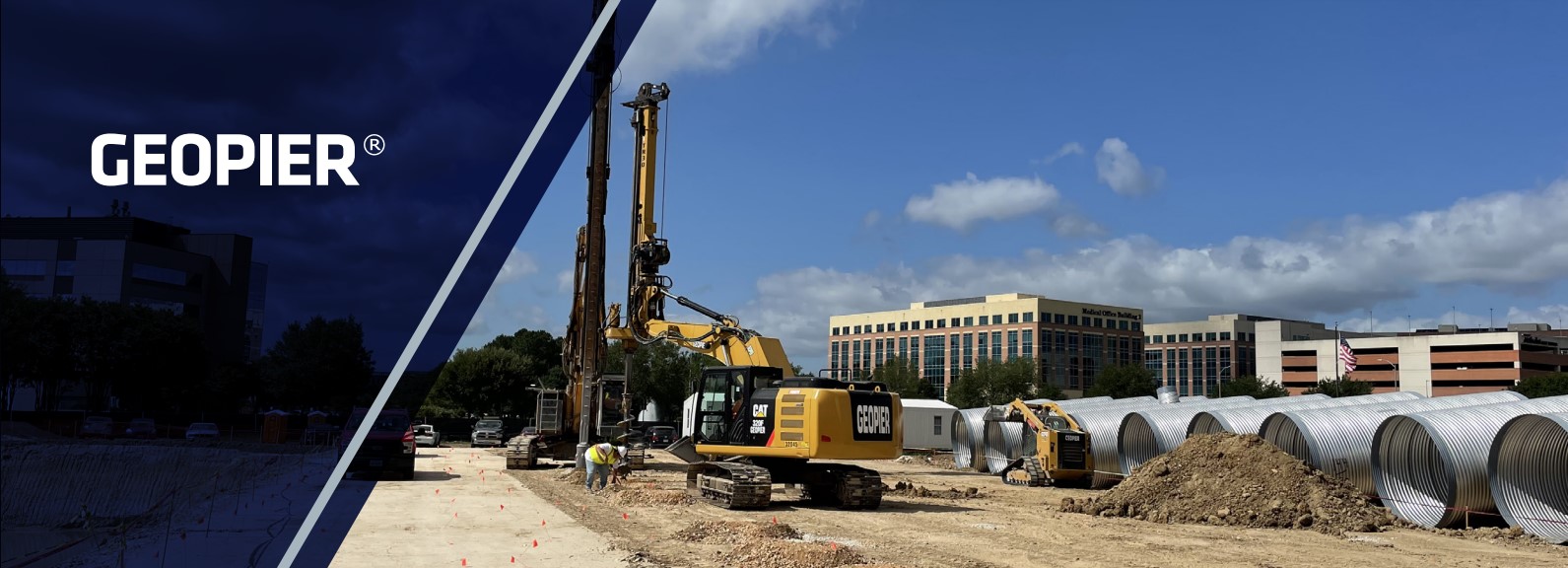Geopier
RAPS, GRAPs, GP3 RAPs,
Geopier came to Christchurch in 2011 with their proprietary patented techniques with the aim of growing their business which specializes (among other things) in liquefaction damage prevention.
They took part in the EQC funded trials in the red zone immediately after the earthquakes and it is well documented in the engineering papers distributed worldwide just how successful the Geopier techniques were.
CLL took the opportunity to become the Geopier licensed operator in NZ. This involved significant investment in training and an investment of $12m in plant to reliably and consistently serve the demand which has evolved in NZ.
Our range of Geopier ground improvement options include:
Rammed Aggregate Piers
- Vertical ramming densifies compact aggregate to form high stiff vertical elements while densifying the surround ground. The load from any above ground structure is shared into the improved ground through an aggregate load transfer platform (LTP)
Grouted Rammed Aggregate Piers
- Grout, as well as aggregate is rammed to form rigid inclusions. A particularly useful technique for soils which are not strong enough to adequately confine aggregate piers.
Geoconcrete Piers
- A concrete base ‘bulb’ is overlain by an extruded column of concrete which is placed in an airtight (closed) system. This allows for a very high degree of quality control. Geoconcrete piers provide excellent settlement control and high bearing pressures for heavy loads in any soil type
GP3 piers
- This technique is the least expensive system available in ground improvement. When the ground is sufficiently strong that holes may be drilled without the side collapsing but not sufficiently strong top prevent settlement, we use excavator mounted augers to drill holes after which we compact aggregate into the holes using an impact hammer.
“CLL\Geopier methodologies can deal with complex and challenging soil conditions including those prone to liquefaction. Geopier insist that all designs are approved by them and that load test results are forwarded to them on completion of each project. They have in their data base; the load test results from in excess of 12,000 successful projects worldwide. It is this real-time real-world performance data which gives Geopier designers the edge in designing foundation solutions.”
Geopier Overview Presentation Oct 2017.pdf
CLL tauriko RAPs.pdf
GP3 System.pdf
Zip2
ABI 13-16 RAPs
— Terry Donnelly

